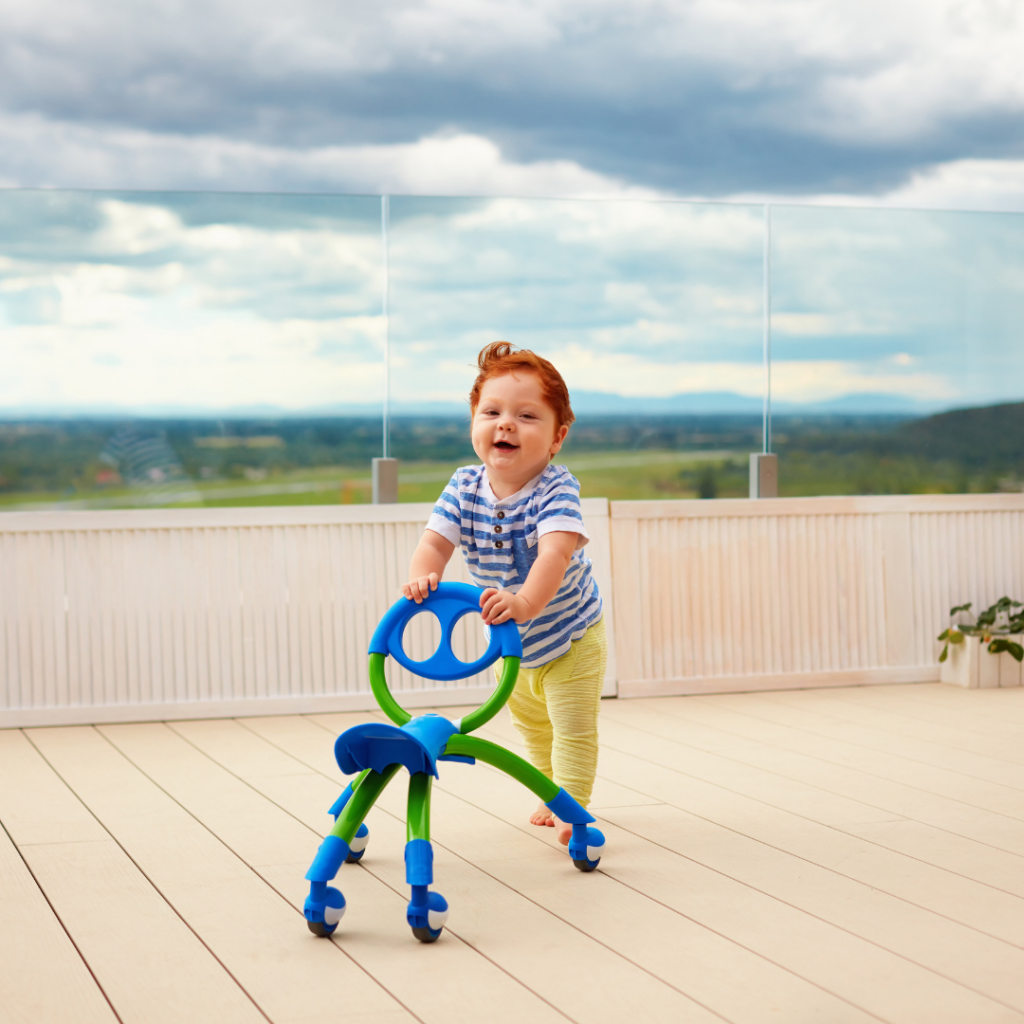If you’re unfamiliar with the term, hypotonia is medical terminology for low muscle tone. In other words, it is the decreased amount of tone in a child’s muscles. Low muscle tone is more common than most realize in younger children, and often caregivers struggle with recognizing the signs and symptoms.

It’s important to distinguish and notice the differences between muscle tone and muscle strength, as the two can often mimic each other. In this article, we will discuss low muscle tone in children and appropriate action to take if low muscle tone is suspected.
What is the Difference Between Muscle Tone and Muscle Strength?
Muscle Tone
The level of tension in a muscle at rest1
- It is the potential ability to respond to an outside force, stretch, or change in direction2
- Examples: protective responses, balance reactions, righting reactions
Muscle Strength
The amount of force the muscle exerts against resistance1
- Ability to actively contract and create force2
- Examples: pushing, pulling, lifting, etc.
What It Looks Like To Have Low Muscle Tone

- Joint hypermobility and instability
- Poor Posture
- “W” sitting
- Difficulty holding the head upright (propping head with hand)
- Slouched sitting posture
- Difficulty sitting for long periods of time
- Impaired Mobility
- May appear clumsy with gross motor activities
- May fatigue quickly; preference for sedentary activities
- Delayed Development of Gross Motor Skills (examples: crawling, jumping, climbing, etc.)
- Delayed Development of Fine Motor Skills (examples: grabbing toys, moving objects between hands, etc.)
- Breathing and Feeding Difficulties
- Ligament and Joint Laxity
What To Do If Your Child Has Low Muscle Tone?
Encourage as much floor time activity as possible. If your baby or child is needing to hold a sustained posture have them take movement breaks, especially during sitting activities. This allows their muscles to rest. Provide the opportunity for full-body movement to help build overall strength. If your child is going to be sitting for a long period of time, encourage a movement warm-up to increase muscle activation.
If you feel your baby or child is experiencing low muscle tone and are unsure of the next steps, please reach out and book a free consultation with us. We’d be happy to help.

